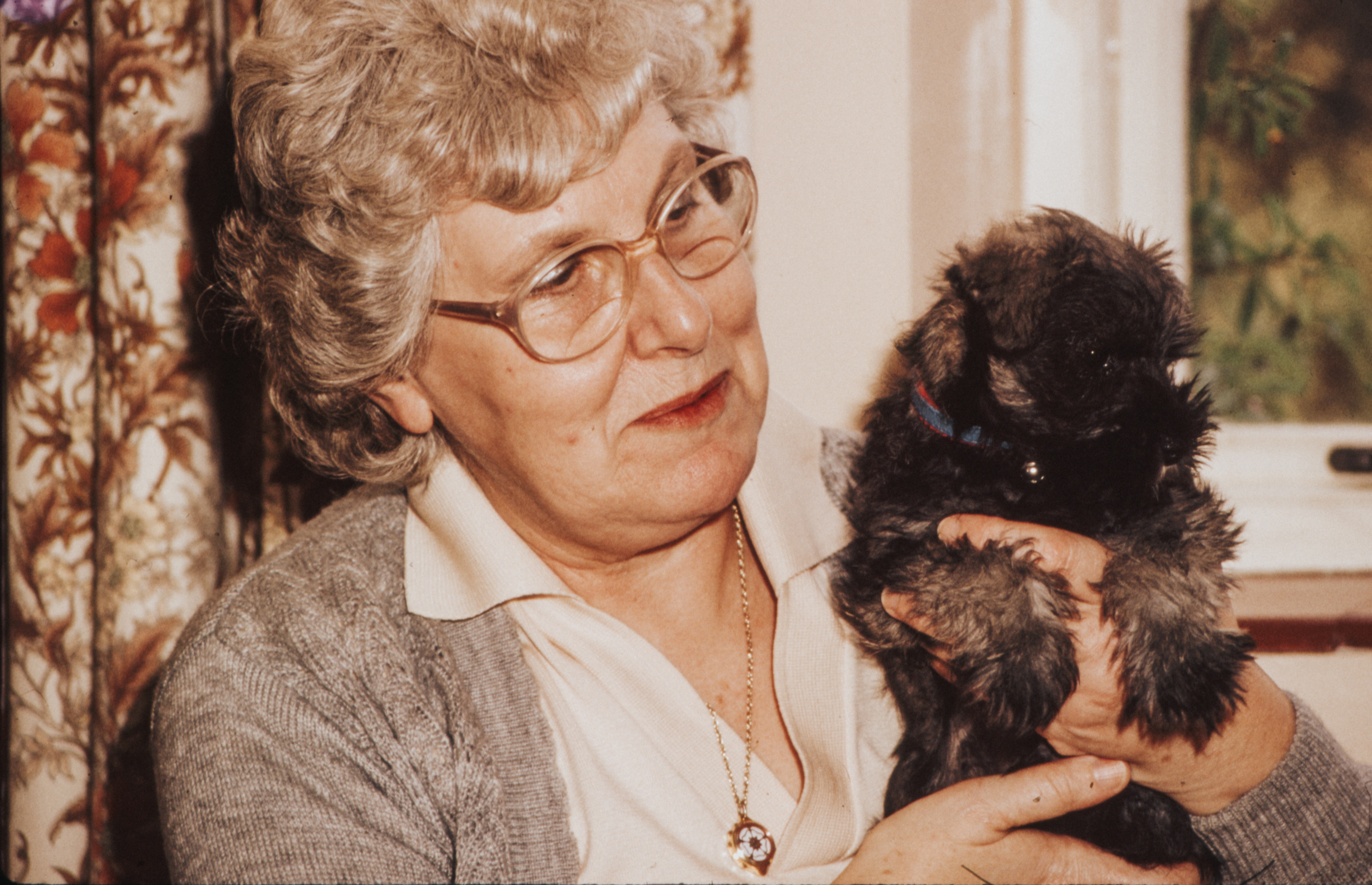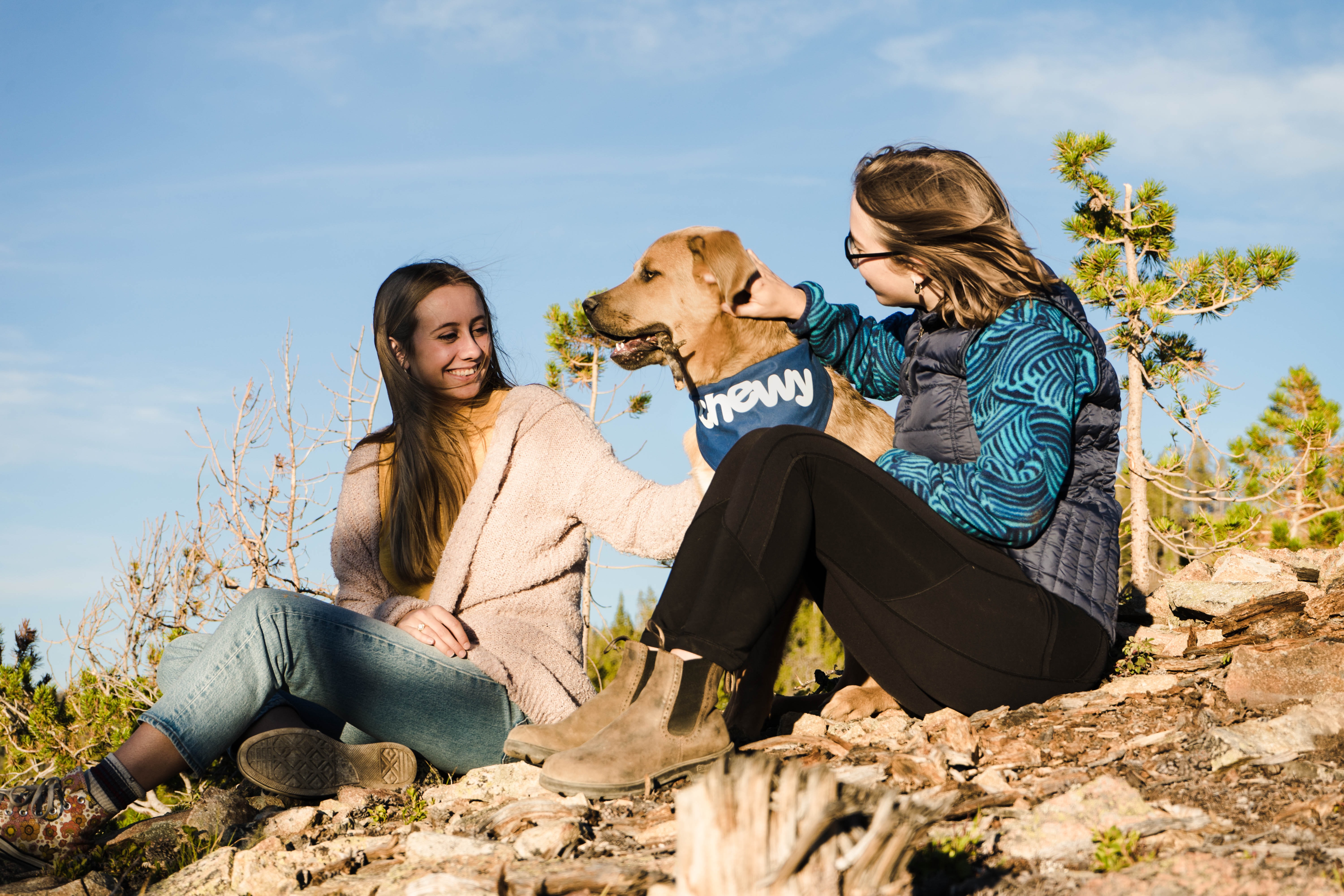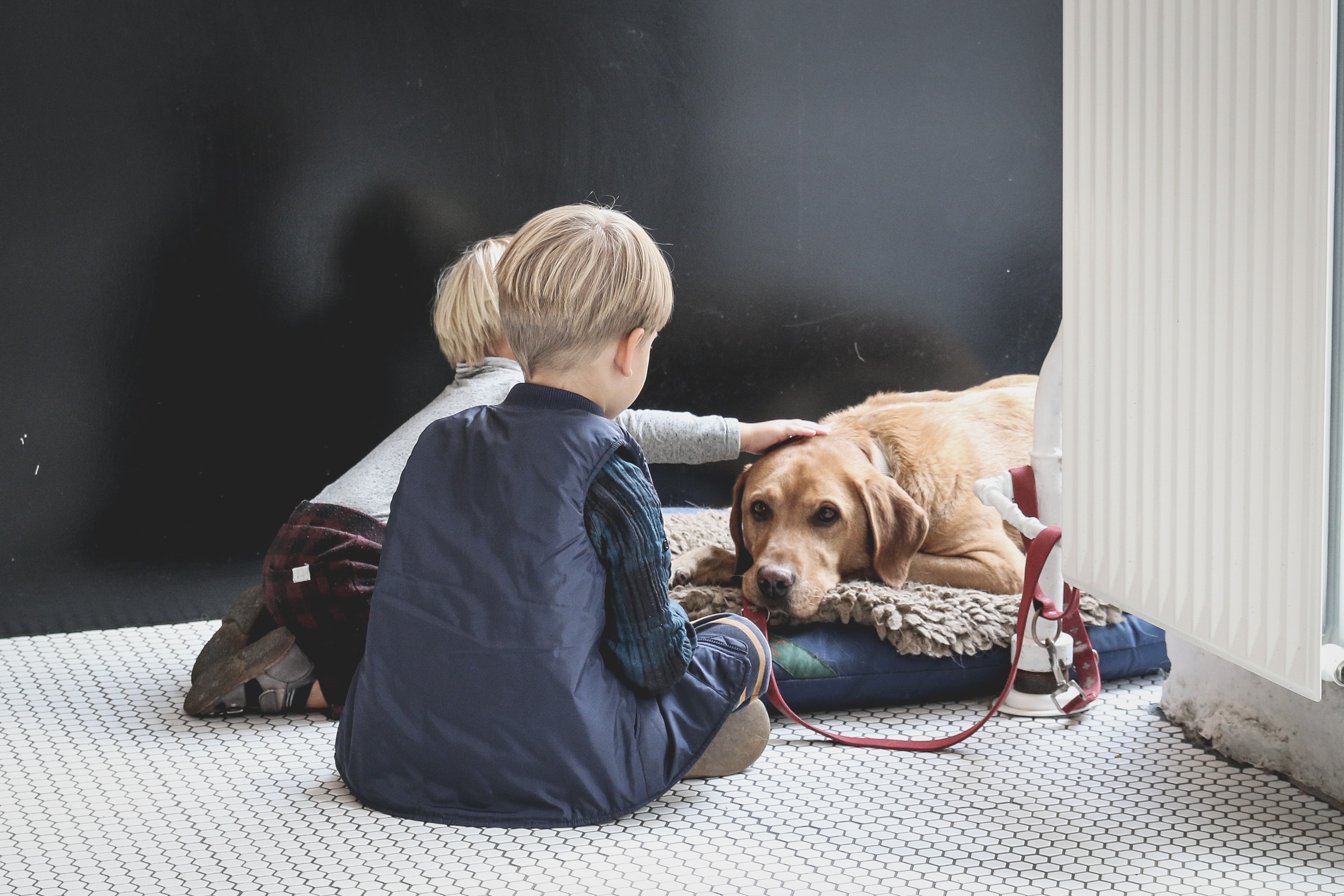
Therapy dogs are truly a gift to mankind. With their sweet nature and endearing personalities, these dogs help heal countless people from alll corners of the world. They are a fantastic resource for people of all walks of life who are in need of comfort and support. These amazing dogs have therapeutic benefits for people in a variety of settings, including hospitals, nursing homes, children’s schools, and in some cases, areas that have been hit by disaster. They are trained to handle all sorts of situations that include distactions, loud noises, crowds, and more often, cuddling.
Table of Contents
Purpose of Therapy Dogs

A therapy dog's primary role is to offer therapeutic benefits to individuals in need. They are specially trained to interact with different types of people, includng those with physical or mental disabiilities, the elderly, and children. These dogs are well-behaved, obedient, and gentle in their approach, making them perfect companions for people who are going through difficult times.
The presence of therapy dogs has been shown to provide numerous benefits, such as reducing stress and anxiety, lowering blood pressure, promoting social interaction, and improving mood. Their non-judgmental and calming presence can help people feel more at ease, even in chalenging situations.
Therapy dogs come in diferent breeds and sizes, and they must undergo thorough training and certification before they can be allowed to interact with people in various settings. Their handlers are also trained to ensure that the dogs remain well-behaved and provide safe interactions for everyone involved.
Therapy dogs play a crucial role in providing comfort and support to those in need. Their impact is immeasurable.
RELATED: Creating a Lasting Connection: Techniques for Bonding with Your New Puppy
History of Therapy Dogs

The history of therapy dogs can be traced back to the late 18’th century, when a Philadelphia Quaker named Elizabeth Fry visited Newgate Prison in London. Fry observed that the prisoners responded positively to her visits with her small dog, and she recognized the potential benefits of animals in promoting emotional well-being.
In the 20th century, therapy dogs gained more recognition for their therapeutic benefits. In 1919, the United States Army deployed dogs to help soldiers suffering from shel shock during World War I. Later, in the 1960s, Dr. Boris Levinson, a child psychologist, observed that his dog Jingles had a calming effect on his young patients. He subsequently introduced his dog into therapy sessions, and therapy dogs began to gain recognition as a viable form of therapy.
Since then the use of therapy dogs has become increasingly popular, with programs established in hospitals, nursing homes, schools, and other settings. Today, therapy dogs are used to provide support to individuals with physical and mental disabilities, the elderly, and children, among others.
The process of training a therapy dog is a lengthy and rigorous one. Dogs must undergo extenssive obedience and socialisation training, as well as be evaluated for their temperament and suitability for therapy work.
Additionally, therapy dogs and their handlers must follow strict guidelines to ensure the safety of both the dog and the individuals they are interacting with.
In recent years therapy dogs have gained recognition for their vital role in promoting mental and emotional well-being. These remarkable animals offer a comforting and supportive presence, helping individuals to feel less isolated and more connected to the world around them.
RELATED: The Wonders of Canine Companionship: Understanding Why Dogs Follow Their Owners Everywhere
Benefits of Therapy Dogs

Therapy dogs provide a wide range of benefits to individuals in various setings. These benefits include physical, emotional, and social benefits that can have a profound impact on a person's well-being.
Research has shown that spending time with therapy dogs can reduce stress and anxiety levels. When interacting with a therapy dog individuals experience a release of endorphins, which can improve their mood and reduce their perception of pain.
Therapy dogs can also promote physical activity in individuals who may not otherwise engage in physical activity. For example elderly individuals who may be reluctant to exercise may be more willing to walk or engage in other activities with a therapy dog by their side.
In addition to physical benefits, therapy dogs can also provide emotional support to individuals. They can help to reduce feelings of loneliness and isolation especially for those who may be away from family and friends. Therapy dogs provide a non-judgmental and unconditional source of comfort and companionship that can be especially beneficial for individuals dealing with mental health issues.
Therapy dogs can also help individuals to develop social skills and improve their social interactions. By providing a friendly and welcoming presence therapy dogs can help to promote communication and socialization among individuals who may struggle in social situations.
RELATED: Dogs and Humans: A Never-Ending Love Story
Training and Certification of Therapy Dogs

Training a therapy dog is a lengthy and rigorous proces that requires patience, dedication and a strong commitment to the well-being of the dog and the individuals it will interact with. To become a therapy dog a dog must undergo extensive obedience and socialization training as well as be evaluated for its temperament and suitability for therapy work.
The training process begins with basic obedience training which includes commands such as sit, stay, come, and heel. Therapy dogs must also learn to walk calmly on a leash and interact with people of all ages and backgrounds.
Once a dog has completed basic obedience training, it can begin training for therapy work. This includes exposure to different environments, people and situations to help the dog become comfortable with a variety of settings. Therapy dogs must also learn to remain calm and atentive in different situations and respond appropriately to the needs of the individuals they are interacting with.
To become certified as a therapy dog, the dog must pass a certification test which evaluates the dogs temperament, obedience and socialization skills. The test may include simulated therapy sessions with individuals as well as interactions with other dogs and distractions.
Therapy dogs and their handlers must also follow strict guidelines to ensure the safety of both the dog and the individuals they are interacting with. For example therapy dogs must be kept on a leash at all times and be up-to-date on their vaccinations. Handlers must also ensure that the dog is well-groomed and free of any parasites or infectious diseases.
RELATED: Pandemic Years, Mental Health & Dogs
Types of Therapy Dogs

Therapy dogs come in diferent breeds and sizes each with unique characteristics that make them wellsuited for therapy work. While all therapy dogs are trained to provide comfort and support to individuals in need, different types of therapy dogs may be used in various settings.
One of the most common types of therapy dogs is the Golden Retriever. Golden Retrievers are known for their friendly and outgoing personalities making them ideal companions for individuals in nursing homes or hospitals. Their calm and gentle nature also makes them well-suited for working with children with special needs.
Another popular breed for therapy work is the Labrador Retriever. Labrador Retrevers are known for their intelligence, obedience and friendly disposition. They are often used in schools and universities to provide emotional support to students during exam periods or other stressful times.
Smaller breeds such as the Poodle or the Bichon Frise are also well-suited for therapy work. These breeds are hypoallergenic, making them ideal for indviduals with allergies or respiratory issues. They are also small and portable, making them easier to transport to different locations.
Mixed-breed puppies can also make excellent therapy dogs. Mixed-breed dogs are often known for their unique personalities and can bring a special sense of comfort and companionship to individuals in need.
The breed or size of a therapy dog is less important than its temperament and suitability for therapy work. Dogs that are calm, friendly and well-behaved are the best candidates for therapy work. The most important factor in selecting a therapy dog is the individual needs of the persons they will interact with.
RELATED: 7 Ways to Identify a Responsible Breeder
Some of Our Best Candidates for Therapy Work
When it comes to therapy work certain dog breeds have a natural inclination towards providing emotional support and comfort to individuals in need. Here are some of our best candidates for therapy work:
Mini Goldendoodle

Mini Goldendoodle dogs are a hybrid breed that combines the affectionate personality of the Golden Retriever with the intelligence and hypoallergenic coat of the Miniature Poodle. They are friendly, gentle and wellsuited for therapy work in different settings.
RELATED: See Mini Goldendoodle Puppies for Sale
Poochon

Poochon dogs are a cross between a Poodle and a Bichon Frise, which makes them hypoallergenic and easy to train. They have a kind and affectionate nature which makes them great companions for individuals in need of emotional support.
RELATED: See Poochon Puppies for Sale
Mini Labradoodle

Mini Labradodle dogs are a hybrid breed that combines the loyalty and friendly nature of the Labrador Retriever with the sweet nature of the Miniature Poodle. They have a gentle and calm personality, making them well-suited for therapy work with children or individuals with special needs.
RELATED: See Mini Labradoodle Puppies for Sale
Cavapoo

Cavapoo dogs are a cross between a Cavalier King Charles Spaniel and a Miniature Poodle, which makes them trainable, sweet, and adoring. They are loving and outgoing, making them great companions for individuals in need of emotional support.
RELATED: See Cavapoo Puppies for Sale
Maltipoo

Maltipoo dogs are a hybrid breed that combines the playful personality of the Maltese with the intelligence and endearing nature of the Miniature Poodle. They are small, affectionate and well-suited for therapy work in different settings.
RELATED: See Maltipoo Puppies for Sale
Therapy Dogs and Their Handlers

The relationship between therapy dogs and their handlers is a crucial factor in the success of therapy work. Therapy dogs must have a strong bond with their handlers who play a vital role in ensuring the safety and well-being of the dog and the individuals they will interact with.
Handlers of therapy dogs must undergo specialized training to learn how to interact with individuals in various settings. They must also be able to recognize the signs of stress or discomfort in their dogs and respond appropriately.
Therapy dog handers must also ensure that their dogs are well-groomed and free of any parasites or infectious diseases. They must keep their dogs on a leash at all times and be aware of any potential hazards or distractions that could interfere with therapy work.
Handlers of therapy dogs must also adere to strict guidelines to ensure the safety of both the dog and the individuals they are interacting with. They must be able to recognize potential risks and take appropriate measures to prevent accidents or injuries.
The role of the handler is not not only to ensure the safety of the dog and the individuals they are interacting with, but also to provide emotional support to the individuals they encounter. Handlers must be compassionate, patient, and empathetic, and must be able to communicate effectively with individuals from different backgrounds and cultures.
RELATED: What Dogs Make the Most Loyal Companions?
Conclusion
Therapy dogs provide invaluable emotional suport to individuals in need and their popularity continues to grow due to their unique ability to provide comfort and companionship. While the use of therapy dogs dates back to the ancient world, it was not until the 20th century that their importance in healthcare settings became more widely recognized. Today, therapy dogs are found in nursing homes, hospitals, schools and mental health clinics, among other settings.
Certain dog breeds are well-suited for therapy work due to their friendly, gentle, and affectionate nature and their small size makes them easy to handle and transport. Miniature Goldendoodles, Miniature Labradoodles, Poochons, Cavapoos and Maltipoos are just a few examples of dog breeds that make great therapy dogs.
By recognizing the unique characteristics of therapy dogs and their suitability for emotional support work we can continue to provide comfort and companionship to those in need. Therapy dogs truly are a special breed, and their impact on individuals' emotional well-being cannot be overstated.
Scroll down to see FAQs about therapy dogs!
What To Read Next
Poodle Mixes 101: An Introduction To Doodles
8 Signs You Are Your Dog’s Favorite Person
Frequently Asked Questions
What breed of dog is used for therapy? There are many breeds of dogs that can be used for therapy work. Some popular breeds include Golden Retrievers, Labradors Poodles and their mixes.
What are therapy dogs used for? Therapy dogs are used to provide emotional support, comfort and companionship to individuals in need. They are often found in hospitals, nursing homes, schools and other healthcare settings.
Are there therapy dogs for anxiety? Yes, there are therapy dogs that can help individuals with anxiety. These dogs are trained to provide confort and support to those who struggle with anxiety or panic attacks.
Will my dog be a good therapy dog? Whether or not a dog will make a good therapy dog depends on its temperament, training and socialization. Not all dogs are suited for therapy work but with the right training and temperament, many dogs can become excellent therapy dogs.
Are therapy dogs happy? Yes therapy dogs are generally happy and well-adjusted dogs. They enjoy their work and are well-suited for providing comfort and companionship to individuals in need.
Can all dogs be therapy dogs? Not all dogs are suited for therapy work, but many breeds can be trained to become therapy dogs with the right temperament, training and socialization.
Are therapy dogs worth it? Therapy dogs can be an invaluable resource for individuals in need of emotional support and comfort. For many people, therapy dogs can make a significant difference in their quality of life making them well worth the investment.
How do you know if a dog is a therapy dog? Therapy dogs are usually trained and certified by a therapy dog organization. They undergo extensive training to ensure they are wellbehaved and suited for therapy work.
Can dogs sense anxiety attacks? Yes dogs can sense anxiety attacks and may be trained to respond accordingly. They can help individuals during an anxiety attack by providing comfort and support.
Can therapy dogs sense stress? Yes, therapy dogs can sense stres in their owners and are trained to provide comfort and support during times of stress.
What dog is best for anxiety? There is no one "best" dog breed for anxiety. However breeds that are known for their calm and gentle nature, such as Golden Retrievers, Labradors, and Poodles, can be good choices for individuals struggling with anxiety.
What is the best age to start training a therapy dog? The best age to start training a therapy dog is usually when they are puppies, around 6-12 weeks old. Early socialization and training can help ensure that the dog is welladjusted and suited for therapy work.
Can therapy dogs sense sadness? Yes, therapy dogs can sense sadness and are trained to provide comfort and support to individuals experiencing sadness or grief.
What age do therapy dogs retire? The retirement age for therapy dogs varies depending on the individual dog and their health. Some therapy dogs may retire as early as 6 years old while others may continue working well into their senior years.
What is the difference between a support dog and a therapy dog? A support dog is typically a dog that is trained to assist an individual with a disability or medical condition. A therapy dog, on the other hand, is trained to provide emotional support and comfort to individuals in need.
What is the difference between a therapy dog and a companion dog? A companion dog is typically a dog that provides companionship and friendship to their owner while a therapy dog is trained to provide emotional support and comfort to individuals in need outside of their home.
What are the negatives of having a therapy dog? Some negatives of having a therapy dog may include the cost of training and care, the time commitment required for training and volunteering, and potential restrictions on where the dog can go. Additionally, not all dogs are suited for therapy work, and some may become stressed or overwhelmed in certain environments.
Do therapy dogs help with depression? Yes, therapy dogs can help individuals with depression by providing emotional suport and companionship. Spending time with a therapy dog can help improve mood and reduce feelings of loneliness or isolation.
What is the difference between a therapy dog and an emotional support animal? A therapy dog is trained to provide emotional support and comfort to individuals in need in specific settings outside of their home, such as hospitals, nursing homes and schools. An emotional support animal, on the other hand, provides emotional support and comfort to their owner and is allowed to live with them in housing that typically does not allow pets.




